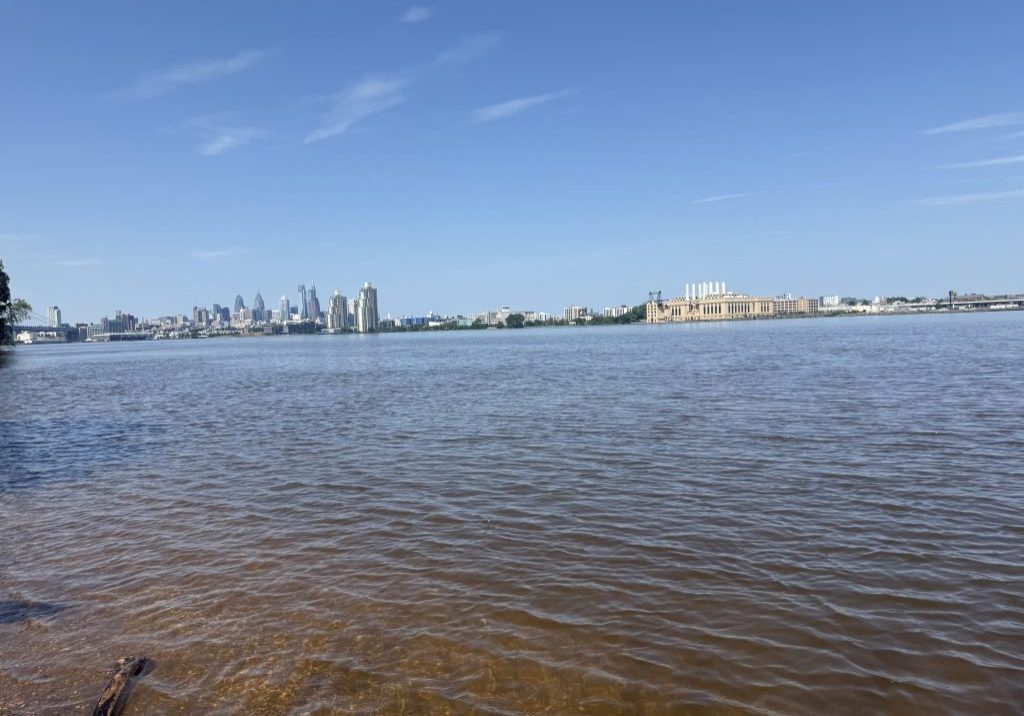
Rival Delaware River ports go to court over Port Wilmington expansion
| January 15, 2024
The operators of the main container terminal at the Port of Philadelphia and two other cargo terminals on the Delaware River have sued the U.S. Army Corps of Engineers to reverse the agency’s approval of construction permits for the proposed Edgemoor container terminal in Delaware.
The suit, which was filed in U.S. Eastern Pennsylvania District Court, seeks to vacate three environmental permits approved by the corps, arguing that the agency “abused its discretion” and acted “arbitrarily and capriciously” in granting them without doing a proper investigation.
The suit was filed by Greenwich Terminals LLC and Gloucester Terminals, which together operate the Packer Avenue Marine Terminal in Philadelphia, by far the largest container terminal on the Delaware River and the main terminal in the port.
The two companies also operate the Gloucester Marine Terminal and Paulsboro Terminal, both of which are in New Jersey.
Asked about the suit, Stephen Rochette, a spokesman for the Pennsylvania region of the Army Corps, said it could not comment on pending litigation.
The suit has exposed the rancor beneath Port Wilmington’s efforts to expand by developing the Edgemoor site and seize a larger share of the Delaware River container cargo business, potentially at the expense of the Port of Philadelphia, which is known as PhilaPort.
Asked about the suit by Delaware Currents, Eugene R. Bailey, executive director for the Diamond State Port Corp., the public agency that owns Port Wilmington but is not a defendant in the suit, said the suit reflects an ongoing pattern against the Edgemoor project.
“The Philadelphia-based ports and Holt Logistics have been trying to stop Delaware from expanding our port economy, and we expect that behavior to continue,” he said, referring to Holt Logistics, which operates the Packer Avenue terminal.
He described the permitting process by the Army Corps as “thorough and exhaustive.”
“The port is a critical part of Delaware’s economy, creating thousands of good paying union jobs,” he added. “We will not be intimidated in our work to save those jobs and create new ones.”
Rival terminals
The three terminals that filed the complaint sit on the river to the north of the proposed Edgemoor terminal, which is about a mile north of Port Wilmington at the junction of the Delaware and Christina Rivers.
Edgemoor would be about 25 miles closer to the sea than the Port of Philadelphia for container ships looking to offload or pick up cargo.
Diamond State Port Corp has long sought to develop a new terminal for the port to dramatically increase the cargo volume it can handle and boost its economic impact.
Port Wilmington’s annual container volume, about 215,000 20-foot equivalent unit containers, the industry metric for measuring container volumes, is less than a third of the container volume handled by the Port of Philadelphia.
Both do strong business in handling refrigerated containers, which carry goods that require low temperatures. The Edgemoor terminal could draw container trade to Wilmington, away from Philadelphia.
Read more: $50 million federal grant boosts Port Wilmington expansion project.
In fact, the lawsuit filed by PhilaPort argues that the Edgemoor project is not “primarily intended to attract new business to the Delaware River but rather to siphon existing business from up-river ports in the Philadelphia area.”
Channel disruption
The lawsuit, which was filed in November, argues that once completed, the Edgemoor terminal would disrupt the flow of ships north to the Philadelphia, Gloucester and Paulsboro terminals.
It would do so partly by creating a turning basin that would block the river’s main navigation channel, and also through the need for constant maintenance dredging in the future to keep clear the channel to the newly developed port, the suit says.
The work will take place at a “critical and heavily trafficked bend” on the river, the suit says.
“It is substantially likely that the proposed project, including the turning basin, will cause delays, travel restrictions, safety concerns, and other impediments to ship traffic moving to and from the plaintiffs’ facilities,” the suit says.
The “devastating consequences” for the ports to the north include an increase in “the likelihood of a collision or blockage in the main navigation channel,” the suit says.
The suit follows the completion, at the end of 2022, of a $480 million decade-long dredging project to deepen the river’s main channel to 45 feet, which would allow some of the largest container vessels on the sea to travel up the Delaware River to the Port of Philadelphia.
The port and state officials saw the dredging project as key to making PhilaPort competitive with ports along the East Coast after the 2016 opening of the expanded Panama Canal enabled the largest vessels to reach the Atlantic coast from China and the Far East by coming through the canal.
Read more: The Delaware River, already a major route for cargo, is poised to become even more competitive
Shipping interference
To build the Edgemoor terminal, Diamond State plans to dredge to a depth of 45 feet to create a new access channel for the terminal, according to the suit. That project would require dredging almost 100 acres of riverbed and more than 3.3 million cubic yards of river sediment and underlying soil.
The design includes a 1,700-foot turning basin that will “occupy the entirety” of the newly dredged main channel, and thus “significantly interfere with commercial shipping operations to and from points to the north of the project,” according to the suit.
“Ships transiting from and to the Atlantic Ocean have no other way to access” the Philadelphia, Gloucester and Paulsboro terminals, except by going through the main channel, past the Edgemoor project, the suit says.
Any disruption would create major issues for commercial users, the suit says.
The river is traversed by 2,400 commercial cargo vessels a year, and Diamond State expects 244 container vessels a year to call at the completed Edgemoor terminal, according to court papers.
In arguing that the Army Corps failed to do a proper analysis, the lawsuit says that the agency “acknowledged” that the turning basin overlaps with the channel.
But the agency “nevertheless concluded, without explanation, that ‘navigation in the Delaware River will not be impacted by the proposed project,’” the suit says.
To keep the access channel open, Diamond State estimates that “significant” sedimentation will need to be managed in the dredged area, and up to 610,000 cubic yards of sediment removed in annual maintenance dredging, according to the lawsuit.
“An ongoing dredging operation of the scale anticipated for this project will add congestion to this section of the Delaware River for significant periods of time, as long as three to four months each year,” the suit says.







